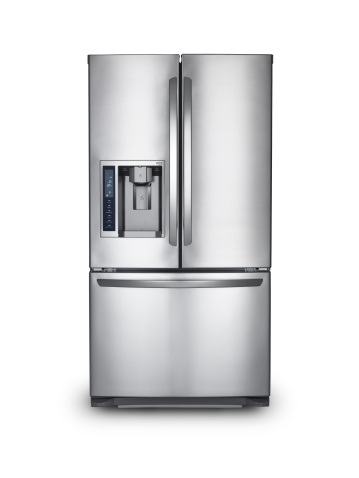 You’re probably aware of the malicious activity waiting to attack your computer and smartphone. But have you ever worried about the security of your home appliances? An Internet security firm recently discovered a global cyber-attack involving more than 100,000 consumer gadgets, including home-networking routers, televisions, and a “smart” refrigerator.
You’re probably aware of the malicious activity waiting to attack your computer and smartphone. But have you ever worried about the security of your home appliances? An Internet security firm recently discovered a global cyber-attack involving more than 100,000 consumer gadgets, including home-networking routers, televisions, and a “smart” refrigerator.
While most consumers are focused on protecting their personal computers, smart household appliances may an easier target to infect and control, because they typically aren’t protected by anti-spam or anti-virus software.
The first-known cyber-attack from connected appliances originated only a few weeks ago. Between January 6th and January 23rd, a wave of malicious e-emails targeted businesses and individuals around the world. According to Proofpoint, the email was sent to 750,000 emails from more than 100,000 appliances.
How can an appliance send a malicious email?
Cybercriminals remotely installed robotic programs known as thingbots on the devices to send the email to victims around the world.
“Bot-nets are already a major security concern and the emergence of thingbots may make the situation much worse,” said David Knight, general manager of Proofpoint’s Information Security division. “Many of these devices are poorly protected at best and consumers have virtually no way to detect or fix infections when they do occur. [We] may find distributed attacks increasing as more and more of these devices come online and attackers find additional ways to exploit them.”
In the past few years, a variety of devices have emerged with Internet connectivity, such as toothbrushes, refrigerators, and home thermostats. The International Data Corporation predicts there will be more than 30 billion devices connecting to the Internet by 2020.
What Else Can Go Wrong?
Any computer device that can communicate to another device or via the Internet can potentially be hacked to do something you haven’t authorized. For example,
- Your baby monitor could be hacked to allow thieves to determine when you’re not at home,
- Your thermostat could be compromised, turning off the heat on a cold winter night and bursting your pipes, or
- Your refrigerator could be attacked, shutting it down and spoiling your food.
What Should You Do?
If you’re using “smart” devices, it’s critical to protect these devices in the same way you’d protect a PC, laptop, or smartphone.
The following are a few tips to help you protect your smart household appliances:
- Secure Your Wi-Fi Network
It’s critical to secure your Wi-Fi network. Regularly change the default password and use a complex one to avoid unauthorized access. If you have a newer Wi-Fi router, use the built-in guest network capability to isolate devices from each other and your network.
- Keep an Inventory of Connected Appliances
Keep an inventory of your connected appliances and devices, including manufacturer names and model numbers. Stay informed about proper security measures associated with these appliances. If you have any questions, check the manufacturer’s website or contact customer support.
- Install Updates in a Timely Manner
Always check for updates and exploits for the items on your connected devices inventory list. Most manufacturers will provide security updates for vulnerabilities as soon as possible. If you find an exploit and the manufacturer hasn’t released an update, it’s probably time to retire that particular device.
To learn more about the global cyber-attack and how to protect your smart household appliances, give us a call or send us an email. We can help you avoid malicious activity on your smart devices.






